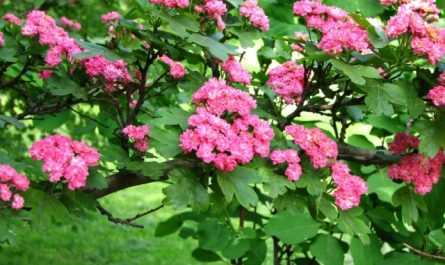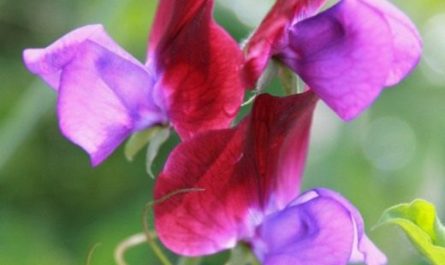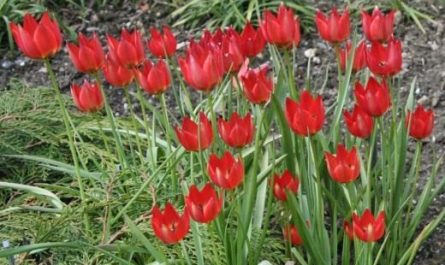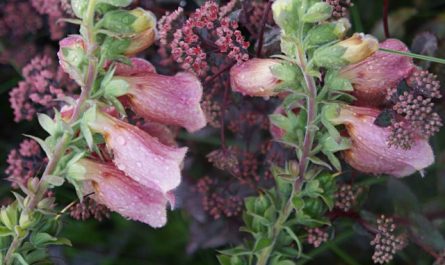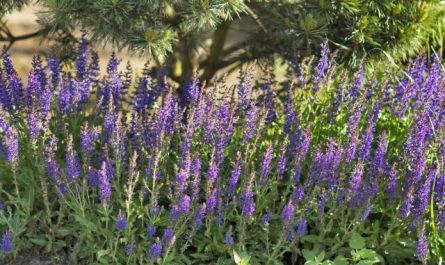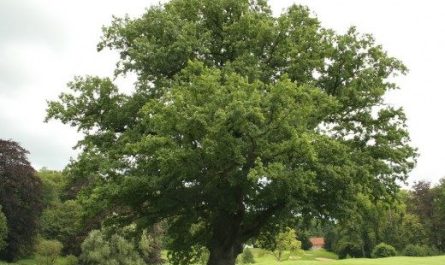In European broad-leaved and even pine forests, one can often encounter a low tree with a rounded crown and often thorny branches. From spring to autumn, the tree is covered with small, oblong leaves; in winter, the trees are completely bare. Each time, before they put on their new foliage, they are completely covered with milky-pink flowers.
«There is no better color than when the apple tree is in bloom“, – the song goes. “But isn’t the song dedicated to a cultivated garden apple tree? What does a wild, forest apple tree have to do with it?” – some all-knowing gardening enthusiast will immediately object.

© Szabi237
Every gardener knows that among the fruit plants of temperate latitudes, the apple tree ranks first in area and yield. Apple orchards in all countries occupy about 3 million hectares, and their annual yields exceed 11 million tons of juicy, tasty fruit. No less than 80 percent of our garden trees are apple trees. All this is true. Maybe the song is only about the garden apple tree, but after all, cultivated varieties ultimately come from the same wild forms of an amazing tree – the wild apple tree. Amazing, first of all, in its fate.
The wild apple tree is one of those lucky representatives of the plant world that people noticed when they took their first steps on Earth. The fruits of wild apple trees are edible soon after they set, are easily accessible, hang on the tree for a long time, and are perfectly preserved all winter in fallen leaves. Naturally, the apple tree was also among the first plants cultivated by people. Images of apples or their remains have been found during excavations of pile buildings, apples are depicted on many monuments in Egypt, and they are mentioned in ancient myths and legends.
Ancient Greece is considered to be the cradle of apple culture. Theophrastus wrote a treatise on fruit growing, where the apple tree is given a place of honor. Writers of Ancient Rome — Cato, and then Varro, Columella, and Pliny the Elder — tell of 36 varieties of apple trees cultivated at that time. From Greece and Rome, apple culture spread throughout Western Europe, and then throughout the world.
It is noteworthy that the Greeks and Romans considered the apple a symbol of love and dedicated it to the goddess of beauty, while the ancient Germans believed that the apple tree enjoyed the patronage of all the gods, and the apple was their favorite delicacy. That is why the evil storm god Donar never dared to touch the apple tree, but threw his menacing lightning spears at other trees. Enterprising Germans, protecting themselves from menacing lightning, planted apple trees around their homes.

© H. Zell
Even the word “paradise” in Celtic means “land of apples” (avalon), and the biblical myth says that Eve plucked an apple from the tree of the knowledge of good and evil.
One version of the ancient Greek myths tells of the wedding of the Thessalian king Peleus, to which all the gods were invited, except for the goddess of discord Eris. The offended Eris, in the midst of the festivities, threw the guests a golden apple with the inscription “To the most beautiful.” It is clear that an argument immediately arose about which of the goddesses it should belong to, since all three guests were famous for their beauty: Hera, Athena and Aphrodite. The goddesses were so beautiful that even Zeus could not give preference to any of them. He instructed Hermes to take the goddesses to the shepherd Paris so that he could resolve the protracted dispute. Paris gave the apple to Aphrodite. From then on, Hera and Athena hated Paris, as well as Troy and all the Trojans. They decided to destroy Troy and all the people. Thus, the wonderful golden fruit became the apple of discord.
The apple tree culture has been known for over 4000 years. In Europe at the beginning of the 60th century there were only 1051 varieties of apple trees, but among them were the wonderful varieties Calville White and Stettin Red, which have survived to this day. It is believed that our cultivated apple tree appeared in the monastery gardens of Kievan Rus in the th-th centuries, although Herodotus, who traveled through Scythia in the th century BC, wrote that he saw garden trees there. The apple orchard founded under Yaroslav the Wise (in ) and later known as the garden was especially famous in Rus.

© Rasbak
Kiev-Pechersk Lavra. Moscow gardens are mentioned in written documents of the 14th century, and the first advice on garden care is already given in “Domostroy”.
In the second half of the 600th century, the famous Russian agronomist A. T. Bolotov compiled the first, but excellent not only for that time, eight-volume scientific description, which included over original varieties of apple trees.
Academician V. V. Pashkevich, I. V. Michurin, L. P. Simirenko and many Soviet fruit growing scientists made a great contribution to fruit growing.
Now the apple tree has taken root in our vast territory from Lake Onega to the southern borders, and in the east – to Lake Baikal, then throughout the Primorsky Territory. What magnificent apple trees are not there now among the 10 thousand cultivated varieties! Through many years of work, breeders have developed varieties whose apples reach 600 (Antonovka six hundred grams), or even 930 grams (knysh). Quite a few varieties yield a ton or more of fruit from one tree. And apples are a valuable food product. Not to mention their high taste, dietary and even medicinal properties, their nutritional value, apples are used to make juices, jam, preserves, compotes, wines. Finally, apples are dried and soaked, many winter varieties are kept fresh until the new harvest.

© H. Zell
It is curious that the apple tree is not very popular in the tropics: it is not found in natural conditions, and in culture it produces not very tasty fruits or does not bear fruit at all. Northern and southern apples also differ in our country: in the middle zone they have increased acidity (for example, the Antonovka variety), while southern varieties are characterized by sugar content.
However, we have again digressed from the modest wild apple trees. The basis for obtaining 10 thousand cultivated varieties of apple trees was only 8-10 wild species, primarily the wild apple tree and the berry apple tree, and botanists count about 70 species in total. The plum-leaved apple tree, or Chinese apple tree, turned out to be especially flexible. Using it as a parent form, I. V. Michurin obtained wonderful varieties: Chinese candid, bellefleur-chinese, Pepi shafrannыy, Chinese saffron, Michurin’s seedless and others. The wild-growing Siberian and Nedzvetsky apple trees also distinguished themselves. The first one is not afraid of any frosts and annually gives abundant harvests of very small, pea-sized apples. They are very decorative, but acquire a pleasant taste only after freezing. The Nedzvetsky apple tree from Central Asia is unusual for its red skin, fruit pulp, seeds, foliage and flowers, even its young bark and wood are reddish. I. V. Michurin masterfully used its coloring and bred a number of varieties with tasty red-fleshed fruits: red bellefleur, bellefleur-record, Komsomolets, red standard and others.
Sometimes nature gives an interesting anomaly to our ordinary forest apple tree. If you had to ask the first resident of the village of Andreevka in the Sumy region about local attractions, you would first of all be advised to look at the “yabluneve dyvo”, “twisted apple tree” or “self-sadden tree”. All these names refer to a 150-year-old apple tree that has grown over an area of almost half a hectare. So now there is either a garden or a forest, in the middle of which an apple tree rises, tightly surrounded by dozens of daughter apple trees. People have long been amazed at the ability of the branches of this apple tree, falling to the ground, to easily take root and give rise to new plants. By the way, the appearance of the branches of the miracle apple tree is unusual: they are twisted like a corkscrew.

© Evelyn Simak
The Andreevskaya apple orchard is being closely monitored by Ukrainian gardening scientists; it was also known to I. V. Michurin, who ordered its cuttings. A similar apple orchard of 600 apple trees, the progenitor of which was one tree, was recently discovered by botanists during a scientific expedition in the Tien Shan.
Materials used:
- S. I. Ivchenko – Book about trees
